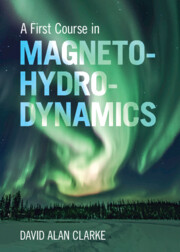Refine search
Actions for selected content:
3 results
6 - Laura Chalk and the Stark Effect
-
-
- Book:
- Women in the History of Quantum Physics
- Published online:
- 02 July 2025
- Print publication:
- 19 June 2025, pp 172-197
-
- Chapter
- Export citation
Introduction
-
- Book:
- A First Course in Magnetohydrodynamics
- Published online:
- 05 June 2025
- Print publication:
- 12 June 2025, pp 1-4
-
- Chapter
- Export citation

A First Course in Magnetohydrodynamics
-
- Published online:
- 05 June 2025
- Print publication:
- 12 June 2025
